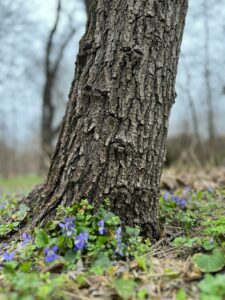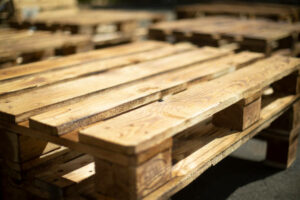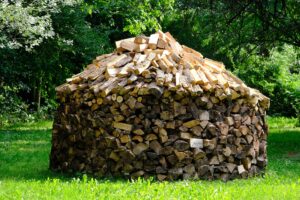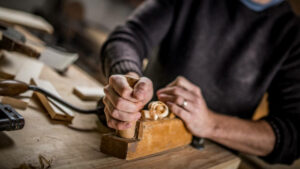When constructing a building, the type of wood beam can significantly affect how long it will last. It can also affect its structural integrity. There are several options for wood beams, including glulam, OSB, and LVL.
Glulam is a stress-rated engineered wood product made from small pieces of lumber that are glued together with industrial adhesives. It is stronger than solid lumber and has better resistance to twisting and warping.
Solid wood beams
Solid wood beams are an attractive and durable component of timber frame construction. They are usually used for decorative purposes or as exposed ceiling beams, without structural framing, but they can also provide structural support. They require regular sanding, sealing, and refinishing to protect them from moisture absorption and deterioration. Solid wood is a natural material, so it is susceptible to drying and cracking, but proper maintenance can help prevent these problems. Regular inspections of the beams can identify signs of damage and potential insect infestation.
Solid timber beams can be made from a variety of wood species, including oak, pine, and spruce. They are subjected to a drying process that preserves them from mold and bacteria, and they are then processed to make them weather-resistant. They can also be decorated with a variety of stains and paints to enhance the aesthetic appeal. Solid wood beams are unique and may show minor cracks or imperfections, but these features are considered an integral part of the beauty of this type of structure.
A wood beam is a structural support that is constructed from various types of wood, including sawn lumber and other engineered wood products. They are often used in the foundation and roof of timber frame structures, such as small houses. They can withstand large amounts of pressure and can also be fabricated into different shapes to suit specific building needs.
Wood beams are available in a variety various sizes of shapes and sizes, from straight to curved. They can also be joined with a variety of techniques, such as finger joints or dovetail joints. They are typically installed by professional carpenters who have the experience and skills to handle these heavy components safely.
While a wood beam can be used in many kinds of buildings, it is particularly effective for timber frames and other structures that commonly use wood as a primary material. Wood beams are typically kiln-dried to ensure that they have the appropriate amount of moisture for stability and strength. However, if a wood beam is not kiln-dried, it will absorb moisture when it dries out, which will cause it to shrink and crack over time. This is a major concern in Arizona, where humidity levels can drop to single digits.
Finger-jointing technique
A finger joint is a type of wood joining technique that has been used in carpentry for centuries. It is a strong and visually appealing way to connect two pieces of wood. The process involves cutting a “finger-shaped slot” in each piece of wood. The slots interlock to create a strong and secure connection. The joint can be used in a variety of other construction projects too, from cabinets to furniture. The process is simple and requires no special tools. It is a great option for novice woodworkers and carpenters.
This method is useful for constructing large structural components that would be too costly to manufacture in a single piece. It also allows designers to use higher-quality timber that is typically not available in longer lengths. It is cost-efficient and can also reduce the cost of a project by using fewer materials. Aside from being stronger than a solid beam, it is also more durable and stable against temperature fluctuations.
While solid wood beams are incredibly sturdy, they can be expensive and complex to install. They are also susceptible to rot and insects, which can weaken the structure over time. However, there are many ways to reduce the risk of these problems without sacrificing the strength of the beam. One way is to use a hybrid beam that consists of a steel flitch plate sandwiched between two regular pieces of wood framing material. This combination has superior strength and can handle loads up to four times greater than a solid wood beam.
The process of finger-jointing uses short lengths of quality timber to produce a longer, more useful piece. It is especially effective for tropical timbers, which tend to warp as they swell and shrink with moisture changes. The technique also saves valuable time and money by avoiding the need to cut and fit a long length of timber.
This process can be used to make both structural and nonstructural timber products, such as benchtops, staircase components, and cladding. It is a cost-effective, environmentally friendly alternative to sawn timbers and offers exceptional strength for applications where it is required. It can also be combined with other timber joinery techniques to make larger, more robust structures, such as glulam columns and I joists.
Glulam
Choosing the right type of wood for a building project is one of the most important steps in construction. There are two kinds of timber beams to choose from: Glulam and solid or composite wood. Each has different advantages for building materials and purposes. Choosing the right one for your building will ensure that your design is executed properly and your structure is strong and safe.
Glulam is an engineered wood product that’s used in many types of buildings. It’s created by joining kiln-dried wood members together using waterproof adhesives. This method is more economical than using solid lumber and allows for curved or unique shapes. It also offers greater strength and stiffness than comparably sized dimensional lumber. Glulam is often used in floor beams, curved structures, garage door headers, and X-beams. The best way to decide whether glulam is the right choice for your building project is to ask a structural engineer.
There are several different types of glulam, and structural composite lumber including LVL, PSL, and OSB. OSB is made by layering strands and flakes of wood and bonding them with moisture-resistant glue. It’s similar to plywood in appearance and is incredibly strong. PSL is another type of engineered wood that uses heat and pressure to bind veneers parallel to one another. It’s slightly stronger than LVL and better equipped to withstand bending stress.
If you’re planning a new home, consider using PSL or LVL for your load-bearing wall support beams. These beams are available in a wide variety of sizes and can be custom-cut to your own wide widths specifications. They can also be painted or stained to match your building style.
When choosing a glulam product, look for manufacturers who are members of quality assurance programs and have an APA trademark. This indicates that the manufacturer is committed to a strict program of quality verification and testing other building materials. All principal model building codes recognize the APA trademark, so you can be confident that the product meets the necessary standards for your building project. Additionally, look for a glulam specification guide that describes important design considerations and identifies the most important criteria for evaluating glulam.
PSL
PSL, or parallel strand lumber, is a type of engineered wood that’s made from glued-together strands of wood. It’s stronger than sawn wood and offers greater load-bearing capacity. It’s also less likely to bow or warp. Additionally, it’s more resistant to moisture penetration than sawn timber, making it an ideal material for use in construction. PSL is often used in beams and lintels, as well as in roof and floor edge and center girders.
The manufacturing process of PSL requires only small amounts of timber, which helps to reduce the pressure on the world’s forest resources. It can also be customized to meet a building’s unique dimensions and design requirements. The PSL strands are long and have multiple thin layers, which makes the product strong and sturdy. The strands are bonded together with an exterior waterproof phenol-formaldehyde adhesive and then treated with heat and microwave radiation. The final result is a strong and durable beam that’s perfect for your next project.
Another advantage of PSL is that it can be fastened without the need for nailing or furring, which saves time and labor costs. In addition, it has a higher compressive strength than other types of lumber. Additionally, it’s easy to work with and can be machined, stained, or painted. It’s a good alternative to traditional sawn lumber, especially for projects that require high-strength frames and joists.
Like other glulam products, PSL can be built to a full design value in a wide range of sizes and configurations. For example, a PSL column can be built in 3.5”, 5.25”, and 7” widths and depths. A PSL column can support a roof or floor, and it can be curved to fit the desired shape of a building. In addition, a PSL column is a good choice for a stair or elevator shaft.
The resulting structure is strong and rigid, yet it’s lighter than a concrete-and-steel column or a steel I-beam. It’s also highly customizable, and it can be made to any shape or length, including a radius. It can also be treated with preservatives to withstand termites and fungal decay. It can also be kiln-dried, reducing the risk of fire and moisture-related damage. https://youtu.be/LnKwIeXARNU






